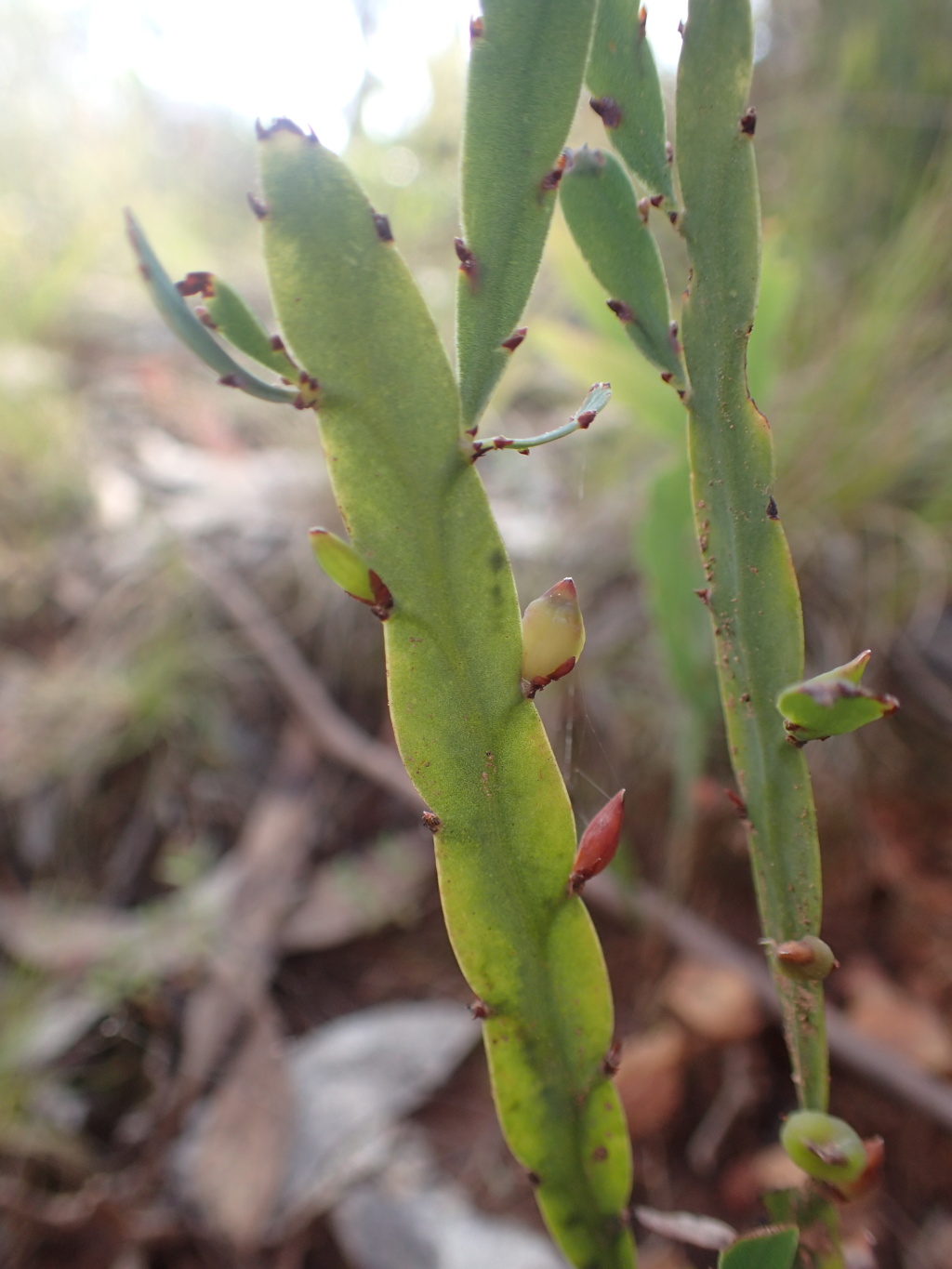Bossiaea vombata
J.H.RossErect rhizomatous shrub to 1.5 m high, ±glabrous, new growth often sparsely hairy; branches flattened and winged, ultimate branches of cladodes 2–10 mm wide, recess at nodes absent or very shallow, greyish green (green when young) or with a white waxy surface that exfoliates when the branches dry. Leaves reduced to scales 1–4 mm long, up to 1 mm wide from midrib to margin, venation obscure. Flowers usually solitary, 7–10 mm long; pedicels c. 2 mm long; bracts several, conspicuous, reddish-brown, distichous, 2–3.5 mm long, often persistent; bracteoles inserted near base, caducous; calyx 3.5–5.5 mm long, glabrous; standard ± equal in length to other petals, deep yellow, sometimes suffused with red on inner surface; ovary shortly stipitate, glabrous, 4–6-ovuled. Mature pods very rarely produced. All known occurrences are clonal.
CVU, EGU, MonT.
2 subspecies, both in Victoria.
Closely resembles Bossiaea bracteosa, from which it may be distinguished by the scarcely recessed nodes on ultimate cladodes and the narrower cladode scales that lack distinct venation.
 Spinning
Spinning